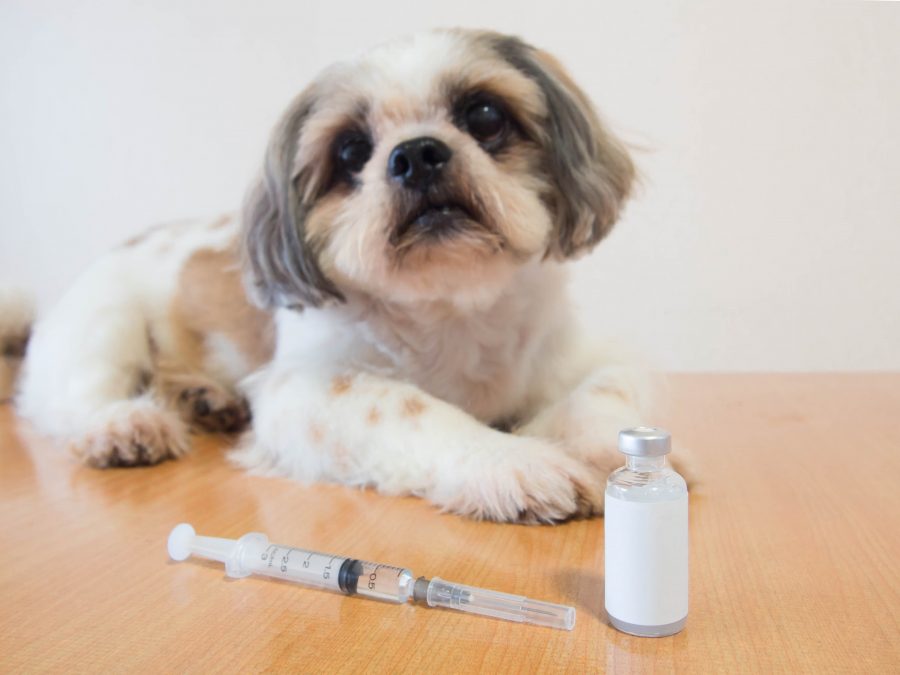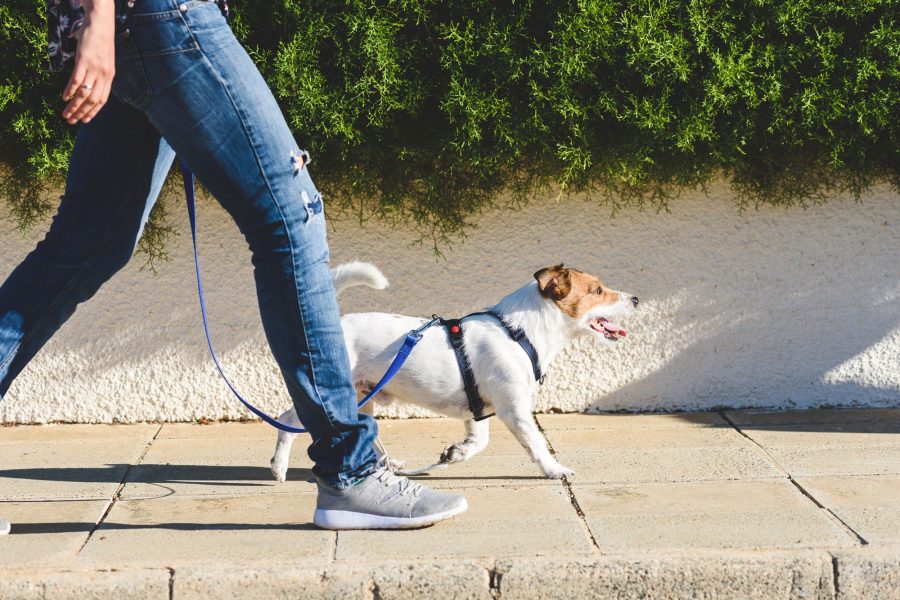The day when you discover your loving pooch has got Diabetes is without a doubt the saddest day for a dog owner. Health problems like diabetes can put you and your dog through some real tough times.
Diabetes in dogs can become a living nightmare if not treated with medical assistance on time. Diabetes symptoms in dogs are widely neglected for being symptoms of some other common illness.
If you are a dog owner of a diabetic dog and want to treat your dog with minimal antibiotics and injections, you are at the right place. In this article we bring you all the information about diabetes in dogs and how home remedies and diet changes can help in controlling it.
However, you should also remember that insulin injections are a must for diabetic dogs. Home remedies and diet tips do not completely strike out the insulin injections. Your dog might still need them.
Table of Contents
What is Diabetes in Dogs?

Diabetes in dogs or Diabetes mellitus causes high sugar levels in the blood glucose. The symptoms for diabetes in dogs are almost similar to us humans. It is a chronic disease.
The worst thing about diabetes is that it can’t be cured. However, it can be reversed by changing your dog’s diet and lifestyle habits. Diabetes in dogs is a metabolism disorder where body reduces the speed of converting food into energy.
Diabetes is all about the connection of glucose and insulin. In this disease your dog’s body will not use insulin the way it is supposed to. Further, this affects the metabolism of dogs.
Metabolism of dogs (and humans) involves the conversion of food into energy by using two things interchangeably, glucose and insulin. When dogs get diabetes their glucose-insulin connection is not connected anymore.
There are also two types of diabetes in dogs, insulin-deficiency diabetes and insulin-resistant diabetes. The former is when the dog’s body is not producing enough insulin. While the latter is when insulin is produced but the dog’s body doesn’t utilize it well.
No matter what type of diabetes your dog has it will cause only damage to his/her body. Like humans, diabetes in dogs can also be Type I and Type II diabetes. These types can further make dogs partially or completely blind.
The high sugar levels in the bloodstream puts other organs at a high risk of damage. Early detection and treatment can help your dog from developing severe health issues.
What Causes Diabetes in Dogs?

For early detection and treatment first you need to know and understand what causes diabetes in dogs. This chronic disease can make your dog sick, very sick not the feverish sick but it causes internal damage.
There are many things that cause diabetes in dogs. They may not necessarily cause diabetes but they are definitely a source to develop the disease.
- The first reason can be the age of your dog. Diabetes can show up at any age but the dogs that are middle-aged and the senior ones are the most likely to get it.
- Female dogs that are not spayed have a higher chance of having diabetes than the male dogs. Also, when female dogs are in heat they naturally become insulin resistant for a while. This can easily cause diabetes in female dogs.
- Obese dogs are also insulin resistant because the extra weight causes pancreatitis and then develops diabetes.
- Chronic pancreatitis is a health condition where due to inflammation of the pancreas organs are damaged extensively and that causes diabetes in dogs.
- If for any reason your dog is put on heavy steroid medication it is also a contributing factor for diabetes to kick in.
- A certain disease known as the ‘Cushing’s disease’ which boosts the production of steroids resulting in overproduction of steroids can also cause diabetes in dogs.
- Many other autoimmune disorders or viral diseases can fire up the sugar production in the blood and thus result in diabetes.
- A diabetic dog can get diabetes through his genetics. Mixed-breed dogs can have diabetes because of either of their parents. Purebred and cross-breeding can become a reason for high or low risk of diabetes in dogs.
Many miniature dogs like Pugs, Dachshunds, and Poodles are at a higher risk for having diabetes.
What are the Symptoms of Diabetes in Dogs?

‘Every action has an equal and opposite reaction’
Newton’s Third Law of Motion is correct for literally everything. Likewise, diabetes in dogs has its signs and symptoms as well. The symptoms for diabetes in dogs are often misinterpreted or neglected to be common.
The thing with diabetes is that early action for these symptoms will eventually lower the damaging reaction.
Following are the symptoms of diabetes in dogs that need early attention:
- When dogs develop diabetes they may become very thirsty. Excessive thirst is a symptom for diabetes in dogs and you may notice that the dog will drink water frequently. You may have to fill the water bowl quite often.
- When drinking so much water the dog may also urinate more frequently. Frequent urination is a way of the dog’s body to steer clear of the excess sugar build-up. His body will try to eliminate the excess sugar through urine and your dog will pee more often.
- With increased urination your dog will also have an increased appetite. An increased appetite is a result of the cells in the body not getting the required amount of glucose. Diabetes in dogs can make them very hungry even after they have eaten their regular portions of food.
- Even with all the hunger and extra eating your dog will start losing weight. Weight loss is a symptom because even with the dog eating more than normal he is not getting the required nutrients from it.
The above mentioned diabetes symptoms in dogs are the normal and early symptoms of diabetes. Let’s dive deeper and know about the advanced signs and health threats of diabetes.
Advanced or severe symptoms can be:
- Vomiting
- Lack of energy (lethargy)
- Loss of appetite
- Depressed attitude (dull, inactive)
Diabetes is a glucose-insulin correlated disease and the under production or over production of the same can cause serious threats to a dog’s health.
Possible health threats:
- Partial or Complete blindness
- Cataract that further leads to blindness
- Seizures
- Kidney Failure
- Urinary tract infections
- Ketoacidosis (acute condition resulting in dehydration, rapid breathing, vomiting etc.)
Diagnosis and Treatment for Diabetes in Dogs

Diagnosing the disease is a simple process performed by the veterinarian. Your vet will do some blood tests to check the blood sugar levels. These tests also include checking excessive sugar (glucose) in the blood and urine of dogs.
These tests also show presence of high liver enzymes or electrolyte imbalances that are indications of diabetes in dogs.
Treatment

The treatment of diabetes in dogs is similar to the treatment of the chronic disease in humans. Insulin injections, a good and restricted diet and exercise will help your dog live a longer and normal life.
- First let’s talk about the Insulin Injections. Almost all dogs need to be given insulin injections on a particular given time. These insulin injections or shots are giver under the skin.
All owners need to learn how to give an insulin injection to their dogs at home. Here’s a video you can watch and learn how to give the insulin shot. It is not very difficult and can be done easily.
- Diet – Insulin injections are doctor recommend and anti-biotic treatment option. Apart from the shots a proper, healthy and restricted diet helps in controlling the sugar levels in the blood.
- Exercise – As important as the above two, exercising your dog will also help in reducing the glucose levels. Exercising and a proper exercise routine will help the dog stay fit and avoid obesity.
Home Remedies and Diet Tips to Reverse Diabetes in Dogs

If your pooch is diabetic your goal should be to keep his blood sugar levels normal. To control these levels you will first need insulin injections. You can try other home remedies or recipes to control the glucose levels.
Home remedies for diabetes mean homemade food and indoor exercise routines. This is the only way to help your pooch live a long and better life. Diet and exercise help with diabetes a lot.
Why Diet is Important?

Food works like fuel in the body. The proper calories, proteins and fibers are the major controllers of the sugar levels in dogs (and humans). Below are some diet tips you should follow:
- Calorie control. Control or determine the amount of calories your dog needs and feed him food monitoring the exact amount of calorie he intakes.
- Make a diet chart and list foods that are high in fiber and are low-fat. Fibrous food helps in slowing down the glucose build-up and low-fat foods provide fewer calories.
- Make sure your pup drinks a lot of water. When dogs consume fibrous food the fibers take away water from the body and cause constipation in dogs.
- Keep your dog away from oranges. Oranges are not good for diabetic dogs
(Suggested- Can dogs eat oranges?)
- Give your dog the vet prescribed dog food. The vet’s diet is mostly a homemade diet. Stick to it.
- If your dog is not eating much or not liking what he is given try giving him diabetic dog treats. You can buy ready to eat treats or try some homemade diabetic dog treat recipes.
- Avoid semi-moist or soft dog food that comes in packets because they are high in sugar.
- Trick your dog in eating the diet foods by adding
- A tablespoon of canned food into his diet food.
- Mix some shredded chicken in his kibble.
- Add chicken broth in dry foods.
- Try giving him/her homemade dehydrated meats, snap peas, carrots or also canned pumpkin.
If your dog is not okay with all the homemade diet you can give him packaged diabetic dog foods like the
- Ketona chicken Recipe dog food
- Merrick grain free dog food
- Nulo adult salmon and peas
Diet for diabetes in dogs also involves balancing time. Your dog’s body will be continuously processing food and insulin. This process is ongoing in the body between the time of meals and insulin injections.
Administer the insulin injection every 12 hours and balance the meal time by 2 to 3 meals in between.
Regular Exercising

Walk you dog as much as you can as it is the best and easy exercise. Regular walks or other exercises will help your dog lower blood sugar levels.
Do not opt for heavy exercises or vigorous workouts as that can lead to drop the blood sugar levels too low.
Walking your dog some extra miles is the easiest exercise and the dog will love it too because that requires minimum efforts.
We humans are not the only ones that develop diabetes and all the types of diabetes. Dogs can develop all types of diabetes as well. Dogs particularly develop diabetes later in life or at an older age.
If your dog gets diabetes later or already has diabetes all you need to do is start reacting early. Staying trim is one important thing to consider when treating diabetes in dogs.
Medicate your dog with insulin and make sure you do that correctly. Changing his or her diet will give them all the healthy and rich nutrients required for the body. Exercise your dog, walk your dog and your buddy is good to go and live a long and normal life.
Hey Readers,
Hope you liked our article and hope we helped you solve your problems related to diabetes in dogs.
For more useful and informative content about dogs, you can now subscribe to our newsletter.
Share this article with your friends on Facebook or Whatsapp.
Let us know your views on dogs and diabetes in the comments section below.
Happy Petting to You Guys!












